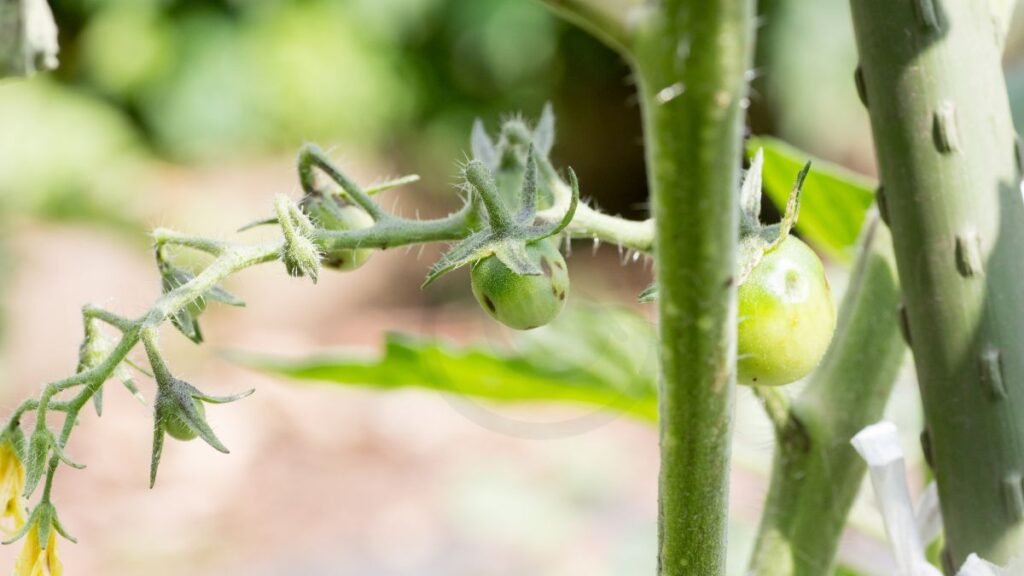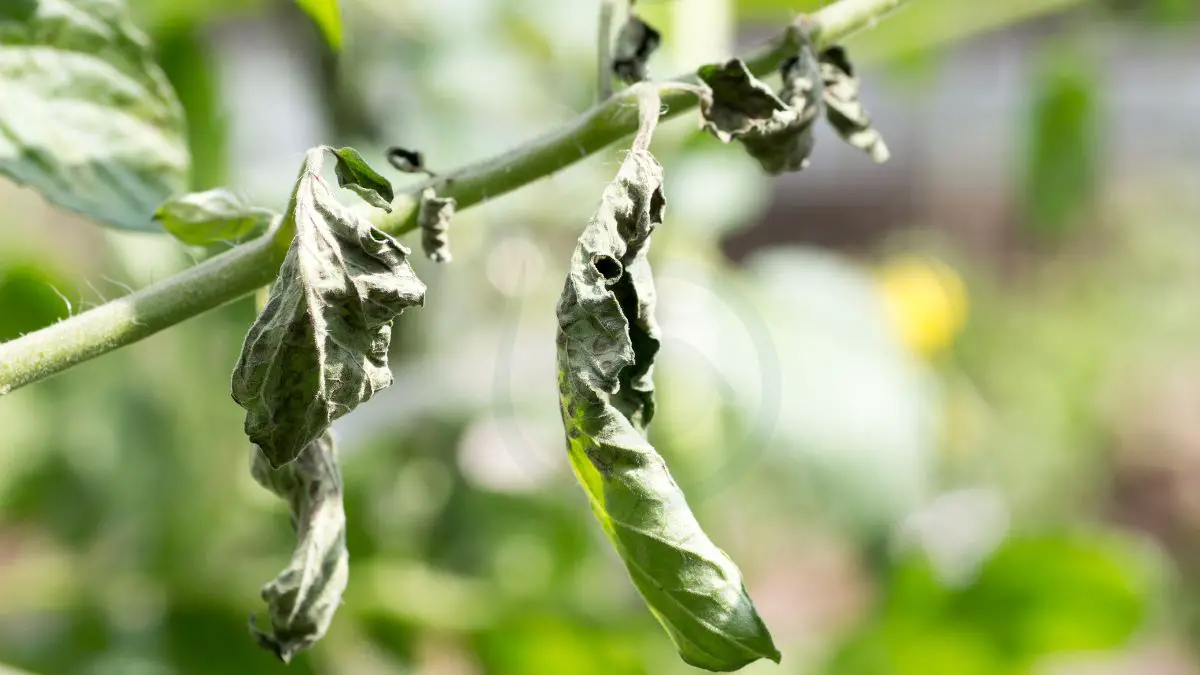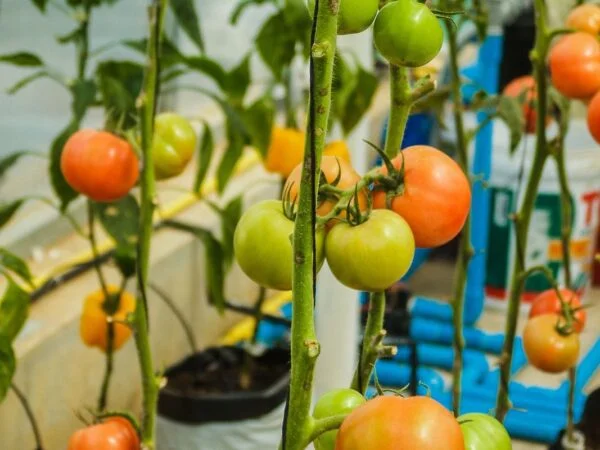If you're noticing yellow spots on your tomato plants, such as leaf yellowing, don't worry – I can help you troubleshoot fungal diseases and address the issue effectively. Yellow spots on tomato plants can indicate various problems, including nutrient deficiencies, diseases like bacterial spot or early blight, or environmental stressors such as overwatering or heat stress. To diagnose the specific cause of yellowing, examine the pattern, size, and location of the yellow spots, and consider factors like watering habits and soil health. Once you've identified the issue, take appropriate steps such as adjusting watering frequency, applying balanced fertilizer, or using fungicides if necessary to restore your tomato plants to optimal health.
Tomato plants developing yellow spots can be indicative of several underlying issues. Nutrient deficiencies, particularly nitrogen, can manifest as yellowing leaves with green veins, while diseases like bacterial spot or early blight typically cause irregular yellow spots on leaves, often with dark borders. Environmental stressors such as overwatering or excessive heat can also lead to yellowing foliage. Proper diagnosis is crucial for effective treatment. Consider conducting soil tests to assess nutrient levels and adjust fertilizer accordingly. Implement cultural practices like proper spacing and adequate airflow to reduce disease risk, and monitor watering to prevent overwatering. Promptly remove and dispose of any affected foliage to prevent further spread of disease.
If you're facing issues with yellow spots on your tomato plants, don't hesitate to reach out for further assistance. Proper diagnosis and timely intervention are essential for addressing the problem and ensuring the health and productivity of your tomato crop. Whether you need guidance on nutrient management, disease control strategies, or optimizing growing conditions, I'm here to provide personalized advice tailored to your specific situation. Let's work together to restore your tomato plants to their vibrant, healthy state.
Key Takeaways
- Identify Yellow Spots: Examine tomato plants for yellow spots as a sign of potential issues.
- Address Diseases: Treat fungal or bacterial diseases promptly to prevent further damage.
- Fix Watering Problems: Adjust watering practices to avoid overwatering or underwatering, which can lead to yellow spots.
- Correct Nutrient Imbalances: Provide necessary nutrients like nitrogen, phosphorus, and potassium to maintain plant health.
- Combat Diseases: Use fungicides or bactericides as recommended to control diseases affecting tomato plants.
- Take Preventive Measures: Implement proper spacing, ventilation, and sanitation to prevent diseases and yellow spots.
Identifying Yellow Spots

Watering Issues
Adjust watering frequency to prevent yellow leaves. Ensure deep watering promotes root growth by reaching lower soil levels. Address compacted soil by aerating around the roots to improve water and nutrient absorption.
Light Deficiency
Increase sunlight exposure for tomato plants to enhance photosynthesis and overall plant health. Consider relocating plants to a sunnier spot with at least 6-8 hours of direct sunlight daily. Prune surrounding trees and shrubs for better light penetration and air circulation.
Transplant Shock
Combat transplant shock with proper watering practices, ensuring the soil remains consistently moist but not waterlogged. Shield plants from low temperatures post-transplant by covering them with frost cloth or plastic tunnels. Maintain consistent watering for the first month after transplantation to aid in root establishment.
Nutrient Deficiencies
Nitrogen Lack
Apply a balanced 5-10-5 NPK fertilizer specifically formulated for tomatoes to address nitrogen deficiency effectively. Avoid nitrogen-rich fertilizers, as they can lead to excessive foliage growth at the expense of fruit production. Proper fertilization is essential to prevent nitrogen deficiency symptoms like stunted growth and pale leaves.
Iron Shortage
Test soil pH levels to determine iron deficiency, which typically occurs in alkaline soils. Use premium acidifying fertilizer if needed to lower pH levels and make iron more available to plants. Look out for signs of iron deficiency such as pale green or yellow youngest leaves, indicating poor chlorophyll production.
Magnesium Scarcity
Identify magnesium deficiency through leaf symptoms like interveinal chlorosis or yellowing between leaf veins. Consider adding magnesium supplements such as Epsom salts to the soil or foliar sprays for quick absorption. Monitor plant health closely for any signs of magnesium deficiency, which can impact overall plant vigor and fruit development.
Addressing Diseases
Early Blight
Early blight symptoms on tomato plants include small, dark spots with concentric rings expanding outward. Yellow halos often surround these spots. To control early blight, rotate crops yearly and avoid overhead watering. Implement preventive measures like mulching to reduce soil splash.
Treat early blight promptly by removing infected leaves and providing proper ventilation. Apply copper-based fungicides preventively or at the first sign of infection. Consider using resistant tomato varieties to minimize the impact of early blight.
Late Blight
Distinguish late blight from other diseases by observing water-soaked lesions on leaves that turn brown and papery. Apply fungicides containing chlorothalonil or mancozeb to manage late blight effectively. Remove infected plant parts immediately to halt the spread of the disease.
Prevent late blight by ensuring good air circulation around plants. Avoid wetting foliage during watering and provide adequate spacing between plants. Regularly inspect your garden for any signs of late blight to take swift action.
Powdery Mildew
Identify powdery mildew on tomato leaves through the presence of white, powdery patches on the upper leaf surface. Use organic fungicides like neem oil or potassium bicarbonate to treat powdery mildew effectively without harming beneficial insects.
Improve air circulation around tomato plants by pruning dense foliage and avoiding overcrowding. Reduce humidity levels in greenhouses by proper ventilation and spacing between plants. These practices can help prevent powdery mildew outbreaks.
Fungal Wilt
Detect fungal wilt symptoms early, such as wilting leaves, stunted growth, and yellowing foliage. Combat fungal wilt with fungicidal treatments containing benomyl or thiophanate-methyl. Treat affected plants promptly to increase their chances of recovery.
Enhance soil drainage by amending heavy clay soils with organic matter like compost or peat moss. Avoid overwatering tomato plants as excessive moisture can promote fungal wilt development in the soil. Monitor plant health regularly for any signs of wilt symptoms.
Herbicide Damage
Recognizing Symptoms
Tomato plants affected by herbicide damage exhibit various symptoms. Look for yellow spots on the leaves, stunted growth, and leaf curling. Regularly inspect your plants to detect issues early. If unsure about symptoms, seek advice from gardening professionals.
Repair Strategies
To address herbicide damage, implement targeted repair strategies based on the symptoms observed. Act promptly to prevent further harm to the plants. Consulting gardening experts can provide effective techniques for repairing the damage.
Fixing Watering Problems
Overwatering Solutions
Tomato plants suffering from yellow spots may indicate overwatering issues. To address this, adjust your watering practices by allowing the soil to dry between watering sessions. This helps prevent waterlogged conditions that promote fungal growth. Improving soil drainage is also crucial in combating overwatering problems. Consider using well-draining soil mixes or adding perlite to enhance drainage capabilities. Monitor your tomato plant's response to these watering changes closely to assess their effectiveness in resolving the yellow spot issue.
Underwatering Solutions
On the other hand, underwatering can also lead to yellow spots on tomato plants. To combat this, increase the frequency of your watering sessions to ensure consistent moisture levels in the soil. This prevents the plant from experiencing stress due to lack of water. If you struggle with maintaining a regular watering schedule, consider utilizing self-watering systems for more efficient and consistent moisture supply to your tomato plants.
Correcting Nutrient Imbalances
Nitrogen Supplements
Providing nitrogen supplements is essential to enhance tomato plant growth and development. Opt for nitrogen-rich fertilizers specifically designed for tomato plants to ensure they receive adequate nutrients. Following the recommended nitrogen application rates is crucial to achieve optimal results without causing nutrient imbalances.
Iron Treatments
Administering iron treatments becomes necessary for addressing iron deficiencies in tomato plants. Choose iron-rich fertilizers or supplements to effectively boost iron levels in the plants. Keep a close eye on the plant's response to iron treatments to track improvements and adjust the treatment plan accordingly.
Magnesium Additives
Incorporating magnesium additives into the soil helps combat magnesium deficiency in tomato plants. Select magnesium-rich fertilizers specifically formulated for tomato plants to address this imbalance effectively. It is important to adjust soil pH levels to facilitate better absorption of magnesium by the plants.
Combating Diseases
Blight Management
To combat blight effectively, develop a detailed plan that includes regular inspection and prompt action. Strategically use fungicides to control blight without overusing chemicals. Maintain good garden hygiene by removing infected plant debris promptly.
Mildew Control
For mildew control, employ methods like neem oil or potassium bicarbonate spray. Regularly inspect plants for any signs of mildew, such as white powdery spots. Apply preventive measures like proper spacing between plants to increase airflow.
Wilt Prevention
Prevent fungal wilt by implementing strategies such as crop rotation and resistant plant varieties. Enhance soil health through composting and mulching to boost plant immunity. Monitor plant vitality closely to catch any wilt symptoms early on.
Preventive Measures
Proper Watering Techniques
Master proper watering techniques for tomato plants to prevent issues like yellow spots. Adjust watering schedules according to the plant's needs, ensuring they get adequate moisture without being overwatered. Using mulch can help retain soil moisture and prevent water-related problems.
Adequate Light Exposure
Ensure tomato plants receive sufficient sunlight to maintain their health and avoid yellow spots. Position the plants in well-lit areas where they can get optimal sunlight exposure throughout the day. To maximize light exposure on all sides of the plant, consider rotating containers regularly.
Soil Nutrition Management
Manage soil nutrition effectively to support the overall health of tomato plants and prevent yellow spots. Regularly conduct soil tests to assess nutrient levels and make necessary adjustments. Amending the soil with organic matter can enhance nutrition absorption and promote healthier plant growth.
Disease Prevention Tips
Implement effective disease prevention strategies to protect tomato plants from various illnesses, including those causing yellow spots. Practice crop rotation, which helps reduce disease risks by disrupting the life cycles of pathogens in the soil. Keeping garden tools clean is crucial to prevent the transmission of diseases between plants.
Avoiding Herbicide Issues
Safe Application Methods
Follow safe application methods for fertilizers and treatments. Wear protective gear when applying chemicals to prevent skin contact or inhalation. Store gardening products in a secure location away from children and pets to avoid accidents.
Alternative Weed Control
Explore eco-friendly weed control methods for gardens. Use mulch or manual weeding to control weeds naturally without harmful chemicals. Opt for natural weed management solutions instead of chemical herbicides for a healthier garden.
Summary
In addressing yellow spots on your tomato plants, it's crucial to identify the root causes, such as diseases, herbicide damage, watering issues, and nutrient imbalances. By understanding these factors, you can take corrective measures to ensure the health and vitality of your plants. Combatting diseases through preventive strategies and avoiding herbicide problems are key steps in maintaining a thriving tomato garden.
To keep your tomato plants flourishing, continue monitoring them regularly for any signs of distress. Implement the necessary adjustments promptly to prevent further damage and promote a bountiful harvest. Remember, a proactive approach to plant care is essential for cultivating robust and fruitful tomato plants.
Frequently Asked Questions
How can I identify yellow spots on my tomato plants?
To identify yellow spots on tomato plants, look for small yellow lesions with dark borders on leaves. These spots may enlarge over time and cause the leaves to turn yellow. Check both the upper and lower leaf surfaces for better observation.
What are the common diseases causing yellow spots on tomato plants?
Common diseases causing yellow spots on tomato plants include bacterial spot, early blight, and septoria leaf spot. These diseases can be identified by specific symptoms such as different patterns of spotting, lesions, and overall discoloration of the plant.
How do I address herbicide damage in tomato plants showing yellow spots?
To address herbicide damage in tomato plants with yellow spots, immediately stop using any suspected herbicides. Remove affected plant parts carefully, ensure proper watering to flush out toxins, and provide a balanced nutrient solution to aid recovery.
What preventive measures can I take to avoid yellow spots on my tomato plants?
Prevent yellow spots on tomato plants by practicing crop rotation, maintaining good air circulation, avoiding overhead watering, mulching to reduce soil splashback, and inspecting new plants before introducing them to your garden. Regularly monitor for early signs of diseases or nutrient deficiencies.
Image Source: Paid image from CANVA




